Japanese Wagyu cows yield buttery, luxurious cuts of meat that start off around $250 per pound. And that’s straight from the butcher. But what is Wagyu beef and why is Wagyu so expensive?
If you’re buying a Wagyu steak prepared by a professional chef, in a high-end restaurant, things only get more expensive. Depending on the cut and origin of the Wagyu, a single ounce can run about $34. An 8-oz Wagyu Ribeye would put you back around $275, which translates to $550 per pound. And that’s before anything else is ordered!
You might be wondering… is Wagyu really worth it?
As a longtime professional chef, I’ll share my experiences in this article about what makes Wagyu so delicious and among the world’s most expensive steaks.
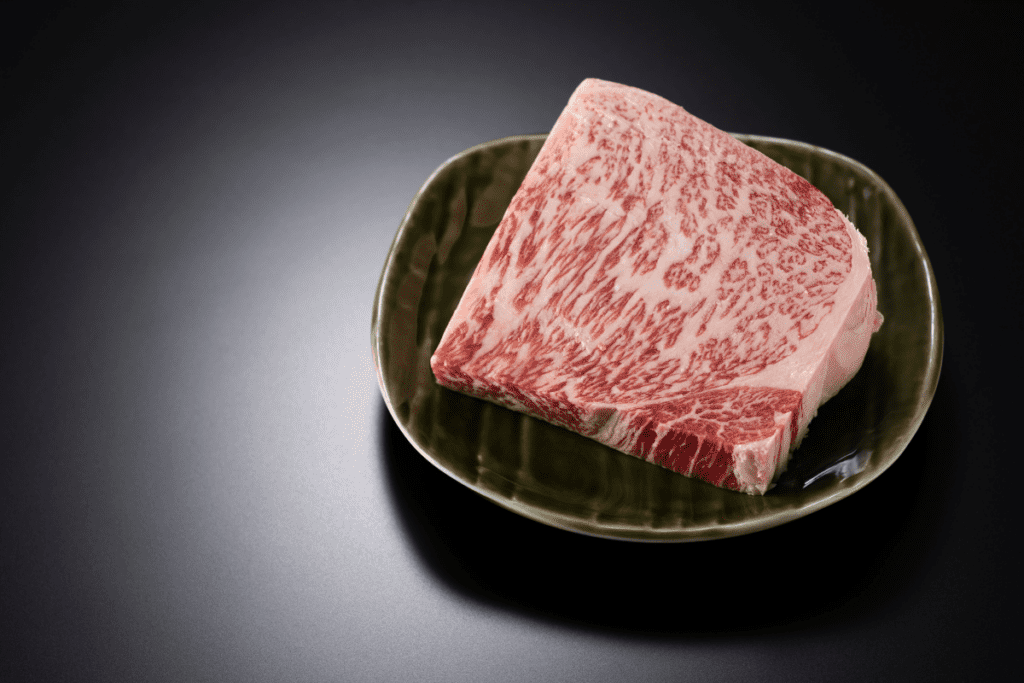
Table of Contents
What Is Wagyu Beef and What Is So Special About it?
Wagyu refers to a type of beef that originates from cows in Japan. The name actually translates to “Japanese cow.”
What makes Wagyu beef so special is its marbling, which comes as a result of excellent farming practices and superior genetic breeding.
Let me break down the major contributing factors of Wagyu’s high quality and high price.
Breeding & Feeding: How Is Wagyu Beef Raised?
There are four specific breeds considered appropriate for Wagyu:
- Japanese Brown
- Japanese Black
- Japanese Short Horn
- Japanese Polled
Each type is chosen for its superior genetics. Typically, a breeder raises purebred cows for about 10 months before they are sold off to a farmer.
Wagyu farmers take the utmost pride in creating a stress-free environment for the cows.
Wagyu cattle are provided with a ton of room to graze. They’re never provided any steroids or hormones to expedite growth. These cows are also given the best feed on the farm. Usually containing rice, corn, wheat, hay, and other grains.
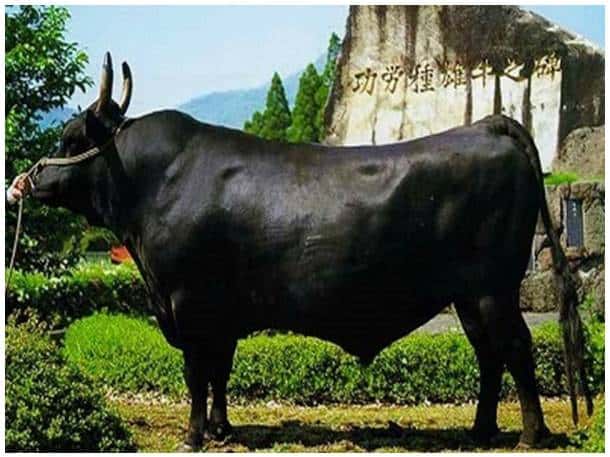
Gotoh T, Takahashi H, Nishimura T, Kuchida K, Mannen H. Meat produced by Japanese black cattle and wagyu. Anim Front. 2014;4:46–54.
The primary goal of the feeding strategy is to provide high-quality meals that allow the cows to naturally gain a significant amount of weight. Usually about 1,500 lbs with 50% fat by the time it’s ready for processing.
Creating a low-stress environment minimizes the animal’s adrenaline and cortisol stress hormones; Both of which lead to tenser muscles. Scientific research concludes that stress-free cows mean fattier, more tender meat.
There are rumors in some circles that some of these cows get massages, special music, and mood lighting. Is any of it true? I’ll chalk it up as an urban legend. But the underlying principle is the same – these purebred cows live lives optimized for comfort.
Grading & Rating: What Is A5 Wagyu?
The good news is that Wagyu is strictly regulated.
Why is this good, you ask?
The simple principle is that if you’re going to dish out this much of your hard-earned cash for a steak, then you want to know it meets a certain standard of quality.
Wagyu beef is graded on the color of the meat and fat, the size of the ribeye, and its marbling content.
Grades ranging from 1-5. A high score of 5 is the best. Below are the beef marbling standards (BMS) of Japan. To achieve a grade score of 5, the BMS must be 8 or greater.
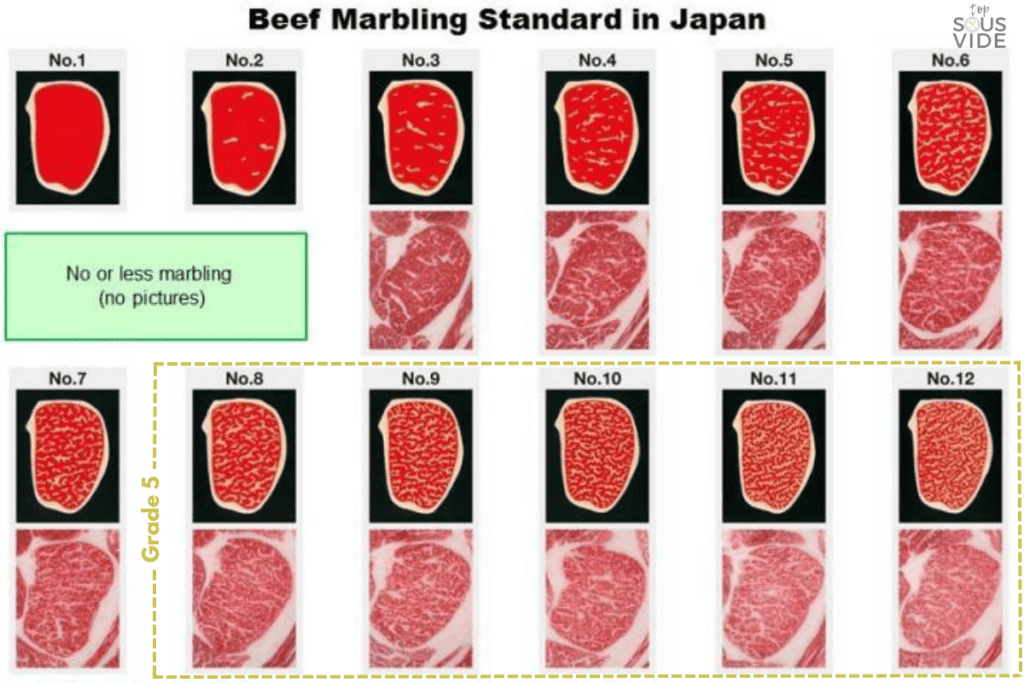
Then it’s graded on yield. The higher quality and quantity yield, the higher the grade. Grade A is given to the best yield, followed by B and C.
A5 Wagyu beef is the absolute best beef on the planet.
Why Is Wagyu So Expensive?
1. Feed & Labor Cost
It takes a lot of effort to maintain high-quality lives for Wagyu cows.
Farmers must maintain a steady flow of the best feed. Oftentimes this means importing materials to an island nation, which results in a higher spend.
All the labor and care costs add up too. Japan does not have cheap labor.
2. Select Origin
Wagyu is produced throughout Japan, but only a select few regions provide the highest quality.
The top-tier origins include Matsusaka, Kobe, Miyazaki, and Omi.
Each region caters to a specific breed, and each prefecture can put in place further authentication requirements. Beef from these specific regions is highly sought after. The supply and demand dynamic drives up consumer costs, so look to pay top dollar for Wagyu from these areas.
Miyazaki Wagyu has been crowned the best-of-the-best Wagyu for 20+ years now.
3. Geography
The geography of Japan plays a big role in cost too. Compared to North America, Japan has significantly less land appropriate for raising cattle. Furthermore, Japanese winters are long and harsh.
There are roughly 2.5 million cattle raised for beef production in Japan versus 94 million in the U.S.
The flavor, quality, and texture of Wagyu make it sought after by high-end restaurants around the world. That demand puts a direct strain on farmers to keep up.
Tack on the fact that there are simply fewer young farmers opting into the industry.
Remember, the Wagyu cow’s journey is slow, steady, and stress-free. You can’t rush greatness.
Less land, plus fewer farmers, plus high demand equals high price tag.
4. Tracking: Meticulous to Ensure Quality
Japanese Wagyu has highly transparent and thorough tracing of every Wagyu cow that enters the market.
Each cow has a tracking number. If desired, you can find out the date of birth, gender, breed, feedlot, and where it was processed, exported, imported, and eventually distributed.
Every package of authentic Japanese Wagyu beef has a 10-digit code on it. Here’s a link to where you can enter the tracking number to retrieve the info on your beef: Individual cattle identification information.
This thorough practice of ensuring legitimacy and quality requires resources. Here’s a link to where you can enter the tracking number to retrieve the info on your beef.
5. Importing Tariffs
After all of the care and love put into raising and tracking Wagyu cattle, it still needs to be shipped. Depending on the destination, this can require a significant amount of effort and money. Tariffs only add to the cost above and beyond the natural export costs.
In the US, for example, a 26.4% import tax is attached to all Japanese Wagyu. This only adds to the already steep price tag of Wagyu beef.
6. Foreign Beef Quotas
To further complicate things, the US places a quota on the total amount of foreign beef it purchases. This can further drive up the price of Wagyu. For example, if the U.S. ramps up imports of lower cost Brazilian beef, less Wagyu will be imported into the US.
7. Accessibility
Since Japanese Wagyu is the best beef in the world, you won’t find it just anywhere.
Accessibility is a real issue for those that want to try it. To get your hands on the absolute best A5 Wagyu beef (BMS 10+), this will most certainly require you to journey to a high-end restaurant.
Typically, in these restaurants an entire brigade of cooks and chefs are employed to craft dishes that best honor the beautiful life of the Wagyu cow.
If a restaurant is purchasing the best of the best for steaks, then it will most certainly be purchasing high-end produce, dairy, and dry goods. All this adds up, and that results in an even higher price tag once Wagyu finds its way onto a dinner menu.
Is Japanese Wagyu Worth the Price?
Japanese Wagyu IS worth the price. If you’re in a position to splurge for a luxury meal, you truly will not be disappointed. There isn’t a steak in the world that compares.
Sure, the Wagyu price per pound is outlandish. Fortunately, most restaurants that serve up Wagyu steaks will offer it as a “supplement” by the ounce. That means you won’t typically have to opt-in for an entire steak.
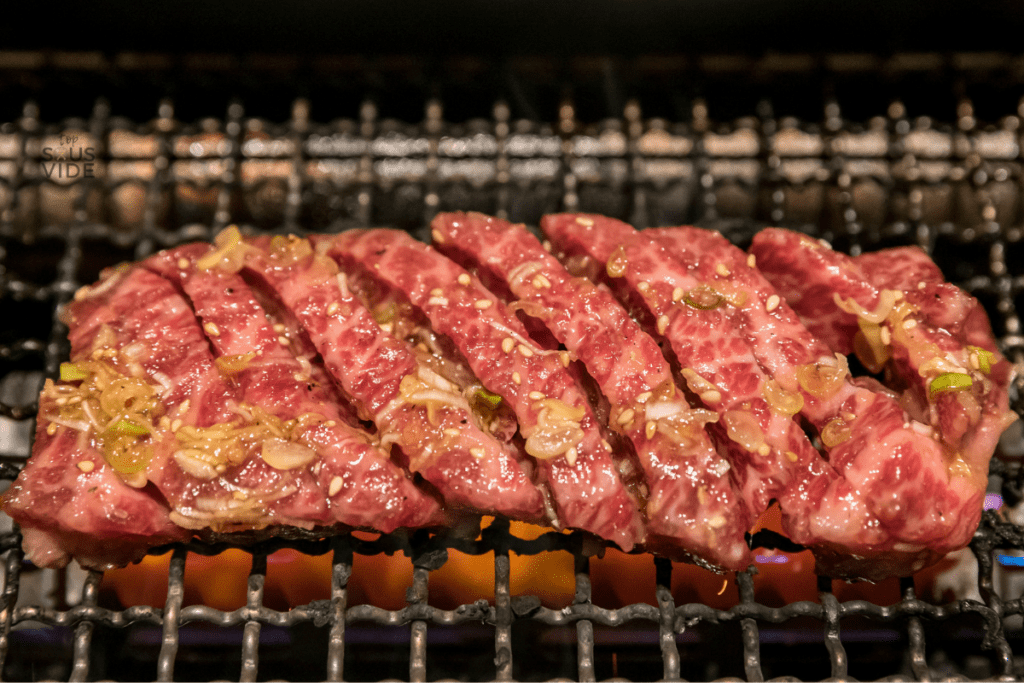
I’ve been fortunate enough to have many Wagyu chef snacks cooking in professional kitchens. The truth is that a little Wagyu goes a long way. Since Wagyu beef is so luxurious, an entire steak’s worth may be a bit overwhelming. It’s quite decadent.
American Wagyu
A great alternative to Japanese Wagyu is American Wagyu. American Wagyu is a crossbreed between a purebred Japanese Cow and Angus. The result isn’t as marbled but still packs a decadent punch.
Because the practices of growing American Wagyu are much less intensive and less regulated, and there are no import taxes or quotas, its price tag is significantly lower. American Wagyu is roughly one-third the cost of Japanese Wagyu!
American Wagyu is a great choice for a special night at home and an easier price to stomach when dining out.
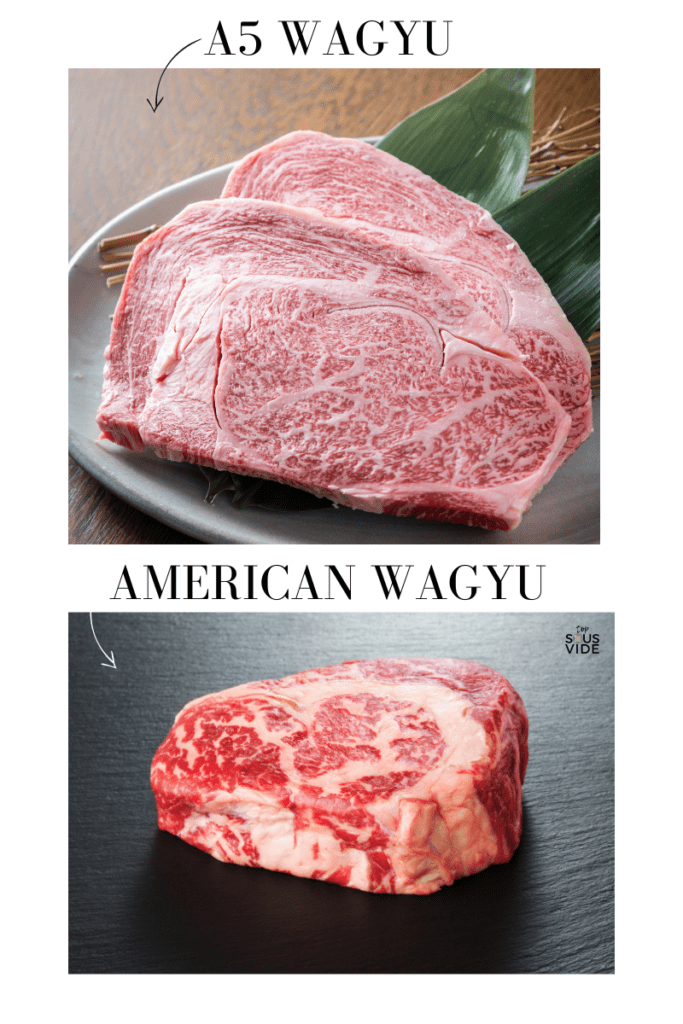
Tips For Purchasing Wagyu Steak to Cook
Be extra diligent when purchasing Wagyu to ensure it is real Wagyu. Finding the source farm and genetic makeup on the packaging is a great way to verify that it is indeed Wagyu. Oftentimes, meat labeled Kobe Beef or Kobe Style is not actually Wagyu, despite Kobe being a type of Wagyu.
Every package of authentic Japanese Wagyu should have a 10-digit tracking number on it. Here’s a link to Japan’s Wagyu tracking system: Individual cattle identification information.
Where to Buy Wagyu Beef
Wagyu, particularly Japanese Wagyu, can be difficult to source at your local butcher or grocery store. There are several sites that sell Wagyu beef online; the largest of which is Crowd Cow. Use this link for $10 off your first Crowd Cow order.
If you haven’t tried ordering online at Crowd Cow, I’d encourage you to do so. They have a large selection of high-quality meats and operate under the core tenents of taste, transparency and convenience.
You can also find Japanese Wagyu steak at Costco warehouses on occasion. Wagyu is regularly available at Costco online well below the market price.
A Brief Note on Preparing Wagyu Steaks
If you’re preparing it at home, I’d recommend that you opt to sous vide your Wagyu. The intense concentration of fat marbling is exemplified by the low and slow method of sous vide cooking.
In my experience, the best-cooked steaks are always the ones with perfectly rendered fat. Sous vide cooking does this perfectly. Wagyu fat renders at about 77 degrees Fahrenheit, a much lower temperature than other steak.
Wagyu FAQs
The cost of Wagyu steak at a restaurant is roughly $35 per ounce, or roughly $275 per 8 oz. The cost of Wagyu steak to cook at home is roughly $250 per 1 lb.
The starting cost of an 8 oz Wagyu steak to cook at home is $125 USD.
The starting cost for 1 lb of Wagyu steak to cook at home is $250 USD.
There are a variety of factors that lead to Wagyu steak being so expensive. The primary reason is great and growing demand because it is the absolute best steak in the world. Against that demand, supply is low because Wagyu only comes from Japanese beef. Japan does not raise many cows for beef production due to several constraints.
Yes, Wagyu steak is worth it. If you have the means to try Japanese Wagyu, you should because there is no other steak like it in the world.
Kobe is generally more expensive than Wagyu. Kobe is a specific type of top-tier Wagyu that comes from Tajima cattle from the Hyogo Prefecture, where the city of Kobe is located.

